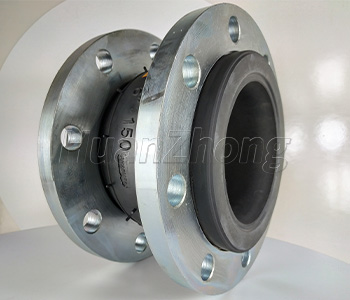What is the cause of rubber joint cracking?
What is the cause of rubber joint cracking?Rubber joints, also known as expansion joints, play a vital role in accommodating movement and preventing damage in structures subject to thermal expansion, seismic activity, or other external forces. However, like any material, rubber joints are susceptible to deterioration and cracking over time. The causes of rubber joint cracking can vary, but they typically stem from factors such as age, environmental conditions, poor installation or maintenance practices, and chemical exposure. In this article, we explore these causes in more detail to understand why rubber joints crack.
1 . Age: Over time, rubber joints undergo natural aging processes that can lead to cracking. As rubber ages, it gradually loses its elasticity and becomes more brittle. This loss of flexibility makes the joints more prone to cracking, especially when subjected to repetitive or excessive movement. Rubber joints that have exceeded their expected lifespan are more susceptible to cracking due to aging.
2 . Environmental conditions: External environmental factors can significantly impact the lifespan of rubber joints. Extreme temperatures, ultraviolet (UV) radiation, and harsh weather conditions can accelerate the aging process and cause rubber to deteriorate more rapidly. For instance, prolonged exposure to high temperatures can cause the rubber to harden and crack. Likewise, exposure to UV radiation breaks down the chemical bonds in the rubber, leading to cracking and structural degradation.
3 . Poor installation or maintenance practices: Incorrect installation or inadequate maintenance of rubber joints can contribute to their premature cracking. Improper installation, such as incorrect alignment or inadequate support, can cause excessive stress and strain on the joints, leading to premature failure. Inadequate maintenance, such as failure to clean and inspect the joints regularly, can allow dirt, debris, and other contaminants to accumulate, potentially accelerating the development of cracks.
4 . Chemical exposure: Exposure to certain chemicals can cause rubber joints to deteriorate and crack. Chemicals like oils, solvents, acids, and alkalis can react with the rubber, breaking down its molecular structure and compromising its integrity. The severity of the chemical exposure and its impact on rubber joints vary depending on factors such as concentration, duration, and compatibility between the rubber and the chemical.
5 . Mechanical stress: Excessive mechanical stress on rubber joints, such as excessive movement, repeated loading, or excessive pressure, can cause cracking over time. When rubber joints are subjected to forces beyond their design limits or stressed beyond their maximum capacity, the rubber's elasticity is compromised, leading to cracks. This can occur in structures subjected to frequent vibrations, heavy loads, or excessive movement without proper allowance for expansion and contraction.
To mitigate the risk of rubber joint cracking, several preventive measures can be taken:
1 . Regular inspection and maintenance: Regularly inspecting rubber joints for any signs of wear, damage, or cracks is essential. Prompt repairs or replacements can prevent further deterioration and potential failures.
2 . Proper installation: Ensuring rubber joints are installed correctly, following manufacturer guidelines and industry best practices, will minimize the risk of premature cracking due to installation-related issues.
3 . Environmental protection: Shielding rubber joints from extreme temperatures, UV radiation, and harsh weather conditions can help slow down the aging process and prolong their lifespan. This can be achieved through protective coatings, enclosures, or proper sheltering.
4 . Chemical resistance: Choosing rubber joints that are compatible with the expected chemical exposure can help minimize the risk of chemical-induced deterioration. Consulting experts or manufacturers for guidance on suitable materials is advisable.
In conclusion, the cracking of rubber joints can occur due to a combination of factors such as aging, environmental conditions, poor installation or maintenance practices, chemical exposure, and mechanical stress. By understanding these causes and implementing appropriate preventive measures, the risk of cracking can be minimized, ensuring the longevity and functionality of rubber joints in various structures.
